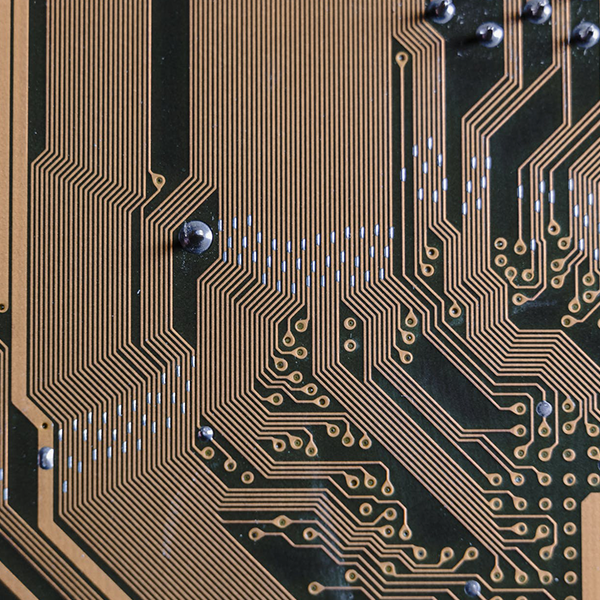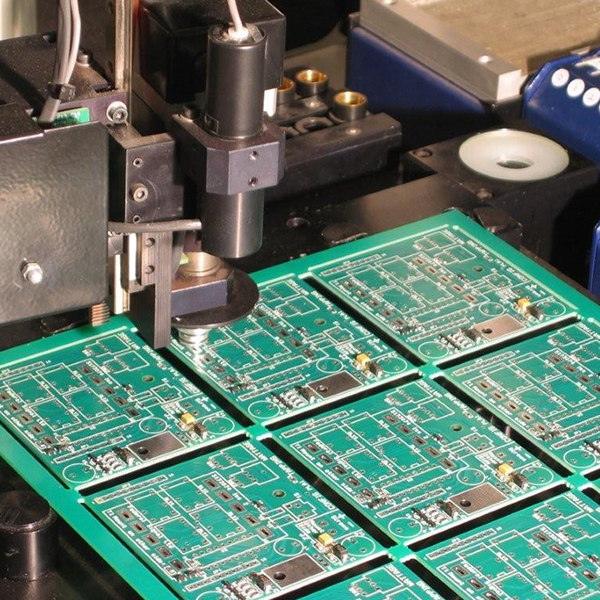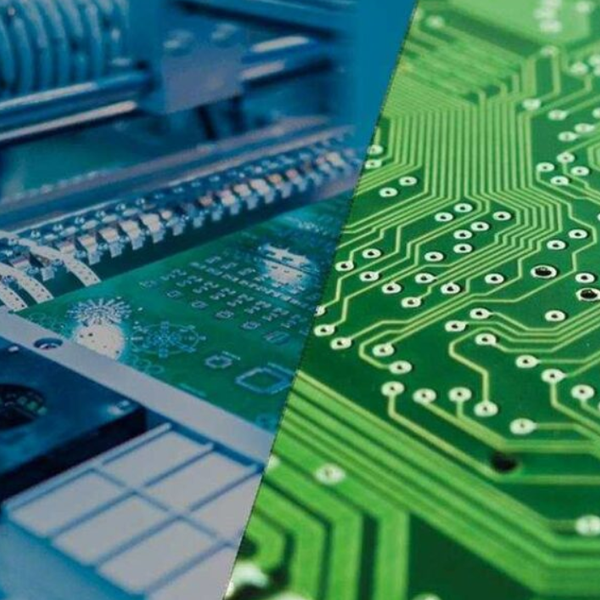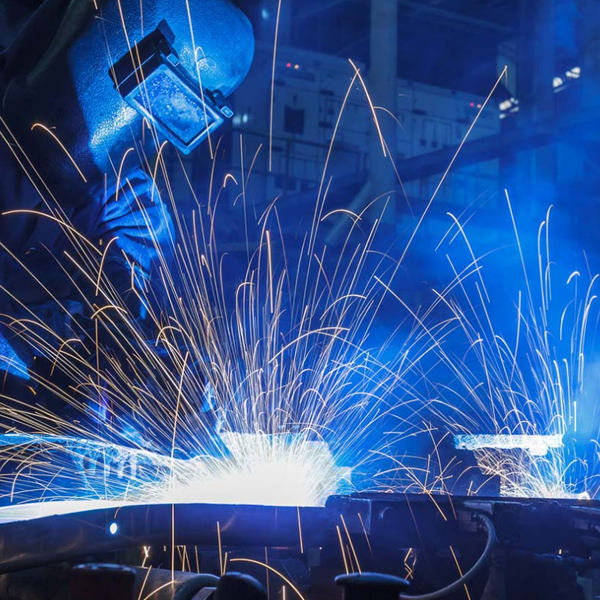Introduction
In the world of electronics, the printed circuit board (PCB) is the unsung hero, quietly connecting components to power everything from smartphones to satellites. But not all PCBs are created equal. Two popular choices—ceramic PCBs and FR4 PCBs—stand out for their distinct strengths, and choosing the right one can make or break your project. Whether you’re battling heat in a high-power LED system or keeping costs low for a consumer gadget, the PCB material you pick matters. This article dives deep into the ceramic PCB vs FR4 debate, comparing their properties, applications, and trade-offs to help you decide which is best for your needs. From thermal management to cost considerations, we’ve got you covered with practical insights and real-world examples. Let’s explore which PCB is the perfect fit for your next big idea.
What is FR4 PCB?
FR4 PCB is the industry standard, a go-to material for most electronics due to its balance of performance and affordability. The name “FR4” stands for “Flame Retardant 4,” referring to its fiberglass-reinforced epoxy laminate structure. This composite material consists of woven glass fabric impregnated with epoxy resin, offering a robust, lightweight substrate for single-sided, double-sided, and multilayer PCBs.
Key Properties
- Affordability: Widely available and cost-effective, ideal for mass production.
- Electrical Insulation: Provides good dielectric strength (Dk ~4.2–4.8) for reliable signal integrity in standard applications.
- Mechanical Strength: Offers decent flexibility and durability for general use.
- Thermal Conductivity: Low at ~0.25 W/mK, limiting its ability to dissipate heat efficiently.
- Temperature Tolerance: Stable up to ~130–140°C, but degrades in extreme heat.
Common Applications
FR4 shines in consumer electronics (e.g., smartphones, laptops), household appliances, and general-purpose devices where cost and reliability are key. It’s the backbone of countless products, thanks to its versatility and ease of manufacturing.
What is Ceramic PCB?
Ceramic PCBs are high-performance boards built on ceramic substrates like alumina (Al₂O₃), aluminum nitride (AlN), or beryllium oxide (BeO). Unlike FR4’s organic composition, ceramics are inorganic, offering superior thermal and electrical properties at a higher cost. These boards are designed for demanding environments where standard materials fall short.
Key Properties
- High Thermal Conductivity: Ranges from 20 W/mK (alumina) to 170–320 W/mK (AlN), excelling at heat dissipation.
- Dielectric Performance: Stable dielectric constants (6–10) and low loss tangents (0.001–0.05) for high-frequency circuits.
- Durability: High mechanical strength and resistance to thermal shock, chemicals, and radiation.
- Cost: Significantly more expensive due to complex materials and manufacturing processes.
- Temperature Stability: Operates reliably up to 600°C in some cases, perfect for extreme conditions.
Common Applications
Ceramic PCBs are staples in high-power electronics (e.g., LED lighting, power modules), high-frequency systems (e.g., 5G antennas, RF circuits), and high-reliability industries like aerospace, automotive, and military, where performance trumps cost.
Key Differences Between Ceramic PCB and FR4
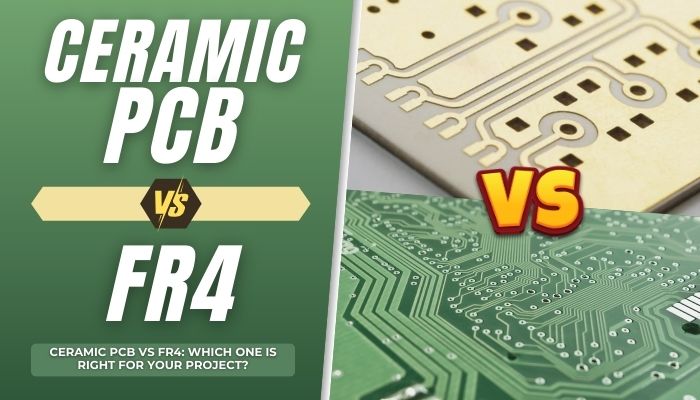
To choose between ceramic and FR4, you need to understand their core differences. Here’s a breakdown:
Thermal Management
- Ceramic: With thermal conductivity 10–100 times higher than FR4, ceramic PCBs excel at spreading heat away from hot spots, preventing component damage. For example, AlN can reach 170 W/mK, making it ideal for high-power LEDs.
- FR4: At just 0.25 W/mK, FR4 struggles with heat dissipation, often requiring external heat sinks or fans to manage hot spots, which can reduce semiconductor lifespan.
Cost
- Ceramic: High material costs (e.g., $50–$100 per square inch) and complex fabrication make ceramic PCBs pricier, limiting them to specialized applications.
- FR4: Affordable at $5–$15 per square inch, FR4 benefits from economies of scale and widespread manufacturing.
Performance
- Ceramic: Superior dielectric properties (low loss tangent, stable Dk) ensure excellent signal integrity for high-frequency and RF applications, like 5G systems operating at 28 GHz.
- FR4: Adequate for standard frequencies (up to ~10 GHz), but its higher dissipation factor (~0.02) causes signal loss in high-frequency circuits.
Manufacturing
- Ceramic: Fabrication is complex, involving high-temperature firing (e.g., 850°C) and conductive pastes (silver or gold). Multilayer designs are challenging, and fragility increases failure rates.
- FR4: Easy to process, supports multilayer designs, and allows flexible shaping, making it ideal for complex circuits and high-volume production.
Durability
- Ceramic: Offers greater mechanical strength, lower thermal expansion (closer to semiconductor CTE), and resistance to vibration and shock, perfect for harsh environments.
- FR4: Flexible and impact-resistant but less robust under extreme conditions, with a higher CTE that can stress solder joints during thermal cycling.
When to Choose Ceramic PCB
Ceramic PCBs are the go-to choice when performance and reliability outweigh cost concerns. Consider them for:
- High-Temperature Environments: Applications like industrial power supplies or automotive controllers, where temperatures exceed 150°C, benefit from ceramic’s stability up to 600°C.
- High-Frequency Circuits: 5G antennas, radar systems, and RF modules rely on ceramic’s low signal loss and stable dielectric properties.
- Thermal-Critical Systems: High-power LEDs or laser modules need ceramic’s heat dissipation to prevent overheating and extend lifespan.
- Harsh Conditions: Aerospace and military electronics demand ceramic’s durability against vibration, shock, and radiation.
For example, in a satellite’s communication module, ceramic PCBs ensure signal clarity and withstand the vacuum of space, where FR4 would falter.
When to Choose FR4 PCB
FR4 is the default for projects where cost and versatility are priorities. Opt for FR4 when:
- Cost is a Factor: Mass-produced consumer electronics like smart home devices or wearables benefit from FR4’s low cost and scalability.
- Standard Performance Suffices: Applications with moderate frequencies (below 10 GHz) and typical thermal loads, like computer motherboards, work well with FR4.
- Design Flexibility Matters: Complex multilayer designs or varied board shapes are easier and cheaper with FR4’s manufacturing ease.
For instance, a budget-friendly fitness tracker can use FR4 to keep costs down while meeting basic performance needs.
Case Studies and Examples
Real-world scenarios highlight the strengths of each material:
Example 1: Ceramic PCB in LED Lighting
A lighting manufacturer used alumina ceramic PCBs for high-power LED spotlights. The ceramic’s 20–30 W/mK thermal conductivity dissipated heat efficiently, extending LED lifespan by 30% compared to FR4, which overheated and caused early failures. The higher upfront cost was offset by reduced maintenance.
Example 2: FR4 PCB in Smart Home Device
A startup producing Wi-Fi-enabled thermostats chose FR4 PCBs for their low cost ($10 per square inch) and ease of multilayer design. The moderate power demands and standard frequencies (2.4 GHz) made FR4 a perfect fit, keeping the product affordable for consumers.
Example 3: Ceramic PCB in Aerospace Electronics
An aerospace firm used aluminum nitride ceramic PCBs for a satellite’s RF module. The ceramic’s high thermal conductivity (170 W/mK) and low dielectric loss ensured signal clarity at 28 GHz, while its durability withstood extreme vibrations during launch—far beyond FR4’s capabilities.
Cost-Benefit Analysis
Choosing between ceramic and FR4 hinges on balancing upfront costs with long-term gains:
- Ceramic PCBs: Higher initial costs ($50–$100 per square inch) stem from expensive materials and complex fabrication. However, their superior thermal management reduces failure rates in high-power or high-frequency systems, lowering maintenance and replacement costs. In critical applications like medical devices, this reliability can justify the investment.
- FR4 PCBs: Low costs ($5–$15 per square inch) make FR4 ideal for price-sensitive projects. While it may require additional cooling solutions (e.g., heat sinks), these are often cheaper than ceramic’s base price. For non-demanding applications, FR4’s savings outweigh its thermal and performance limits.
- Long-Term Perspective: Ceramic’s durability and efficiency can yield a better return on investment in harsh or high-stakes environments, while FR4’s affordability suits high-volume, standard-use cases.
A comparison table summarizes the trade-offs:
| Property | Ceramic PCB | FR4 PCB |
| Thermal Conductivity | 20–320 W/mK | 0.25 W/mK |
| Cost per Square Inch | $50–$100 | $5–$15 |
| Dielectric Constant | 6–10 (stable) | 4.2–4.8 (varies) |
| Max Temperature | Up to 600°C | ~130–140°C |
| Best For | High-power, high-frequency, harsh environments | Cost-sensitive, standard applications |
Conclusion
The ceramic PCB vs FR4 debate boils down to your project’s priorities. Ceramic PCBs shine in high-performance scenarios, offering unmatched thermal conductivity, signal integrity, and durability for applications like 5G systems, LED lighting, or aerospace electronics. Their higher cost is a worthwhile trade-off when reliability is non-negotiable. FR4 PCBs, on the other hand, dominate cost-sensitive markets with their affordability, versatility, and ease of manufacturing, making them ideal for consumer electronics and general-purpose devices. By weighing thermal needs, frequency requirements, and budget, you can pick the PCB that drives your project to success.Need help choosing? Consult a PCB expert to align your material choice with your goals. At TriWin PCB, our advanced manufacturing solutions and 10,000-square-meter facility deliver precision for both ceramic and FR4 boards. With cutting-edge equipment like LDI exposure machines, we ensure your PCBs meet the highest standards, optimizing performance and reliability for your next breakthrough.



